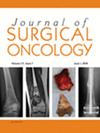Enhanced Functional and Surgical Outcomes With 3D Printing in Orthopedic Oncology: A Comparative Meta-Analysis Against Conventional Techniques
Abstract
Introduction
Three-dimensional printing (3DP) technology has increasingly gained attention in orthopedic oncology, where complex tumor resections and reconstructions demand high precision. 3DP enables the creation of patient-specific models and prostheses, which can improve postoperative quality of life for patients while assisting surgeons in preoperative planning, enhancing surgical accuracy, and improving outcomes in complex oncologic cases. Despite its potential, comprehensive data on the effectiveness and applications of 3DP in orthopedic oncology are limited. This paper assesses whether using 3DP compared to conventional techniques results in better outcomes in orthopedic oncology.
Methods
A comprehensive search of Ovid MEDLINE, Embase, Scopus, and Web of Science was conducted until November 2024. Studies comparing 3D printing to conventional methods in orthopedic oncology and reporting outcomes such as operative time, blood loss, recurrence rates, or functional scores were included. Weighted means and meta-analyses were conducted to compare these outcomes. Statistical heterogeneity was adjusted by using a random-effects model.
Results
Fourteen studies comprising 478 patients met the inclusion criteria. Our primary findings were improved MSTS scores (mean difference [MD]: 2.17, p = 0.00) and decreased blood loss (MD: −69.8 mL, p = 0.00) in the 3D printing groups. There was no significant difference in operative time between 3D printing and conventional techniques (MD: −12.2 min, p = 0.32). Tumor recurrence rates did not differ significantly between groups (relative risk: 0.88, p = 0.50). Subgroup analyses indicated that 3D-printed implants showed the greatest benefit in reducing OR time and blood loss, with the other subgroups showing no significant difference in OR time, blood loss, or recurrence rate.
Conclusion
The findings suggest that 3D printing in orthopedic oncology may enhance surgical precision by reducing OR time, intraoperative blood loss, and improving postoperative function, without affecting recurrence rates. Substantial heterogeneity limits confidence in these findings.
Level of Evidence
Level III.


 求助内容:
求助内容: 应助结果提醒方式:
应助结果提醒方式:


